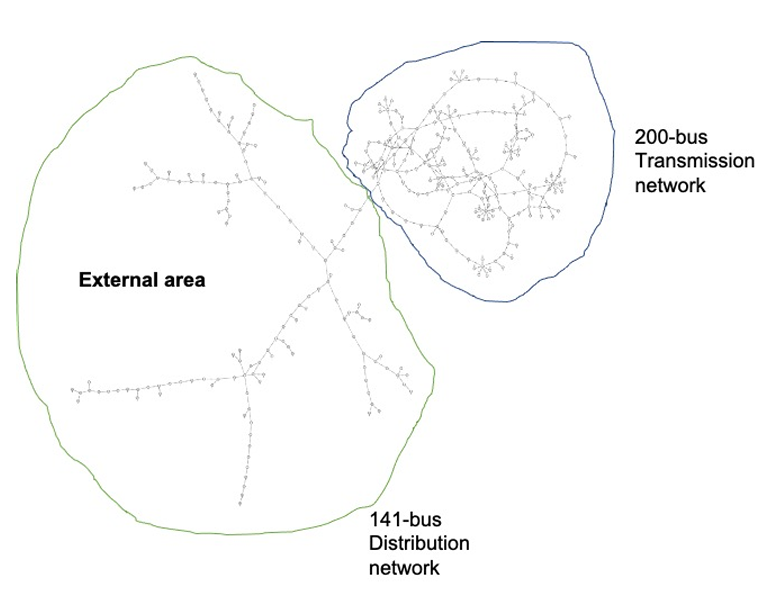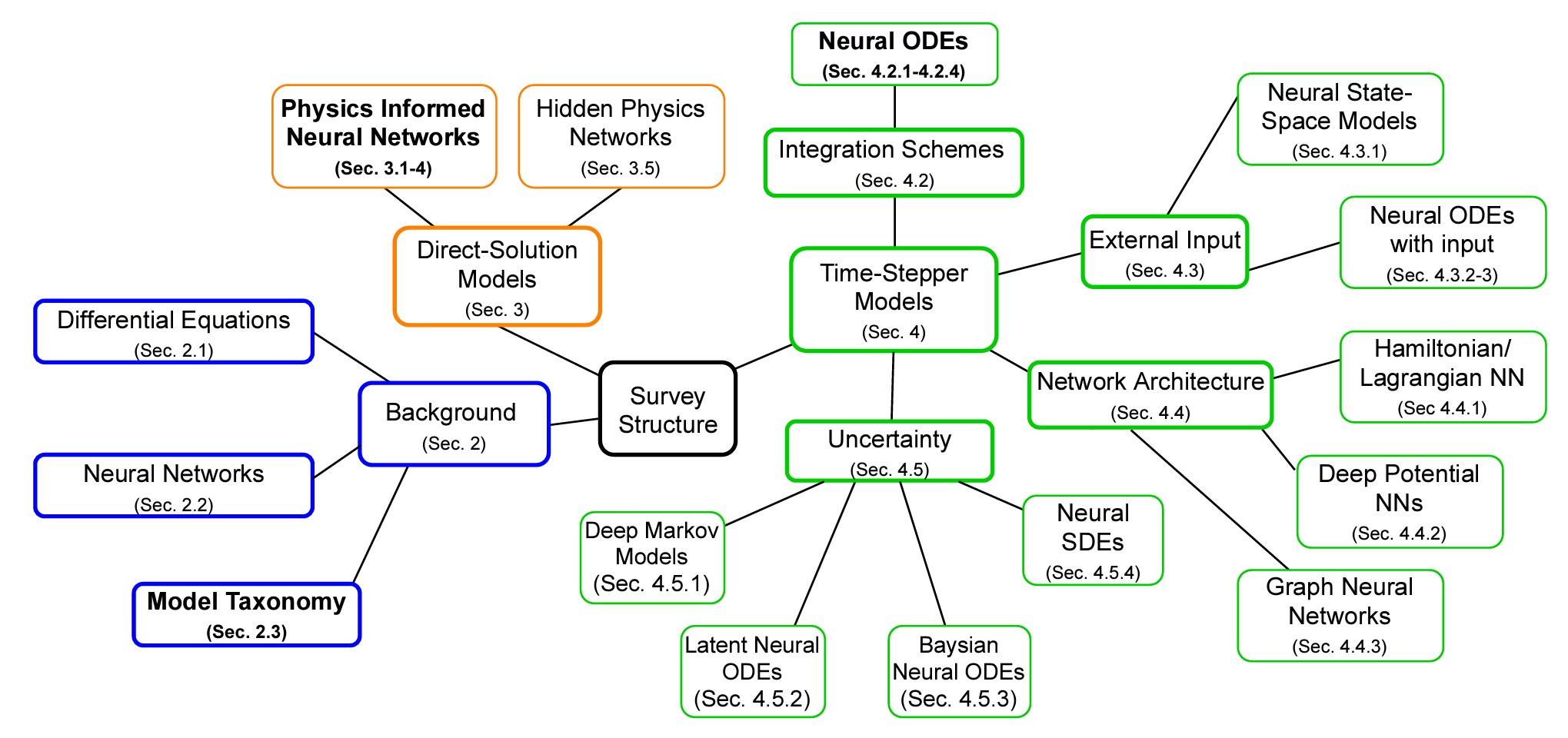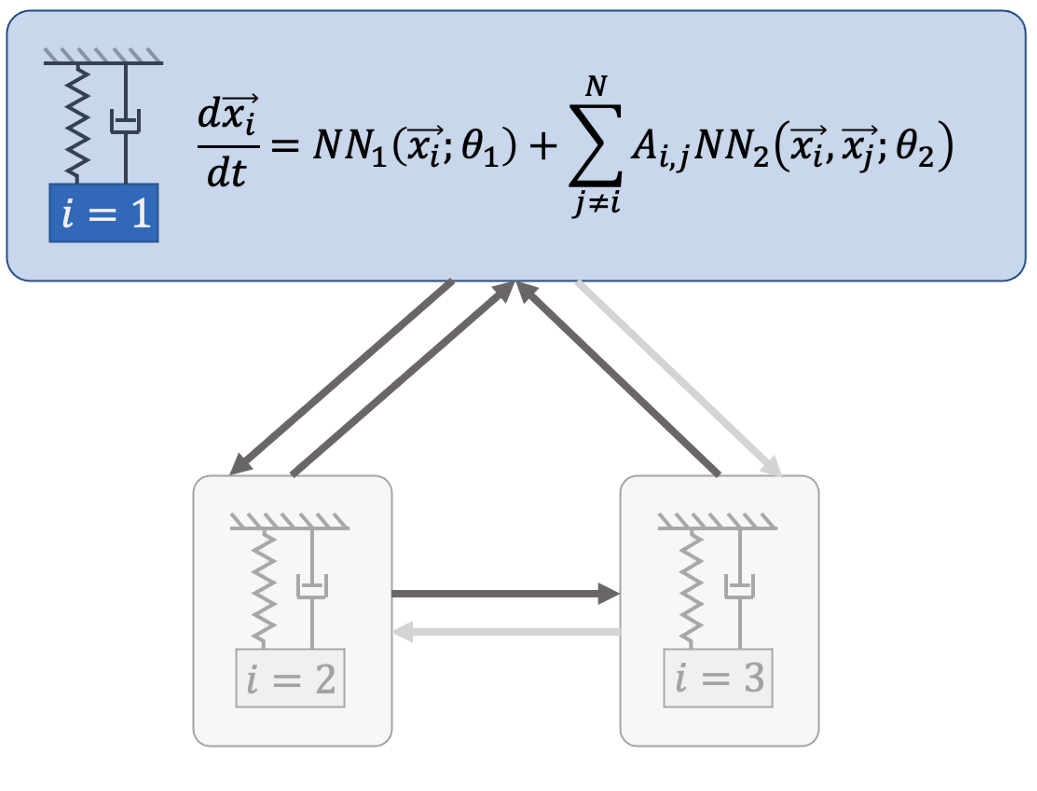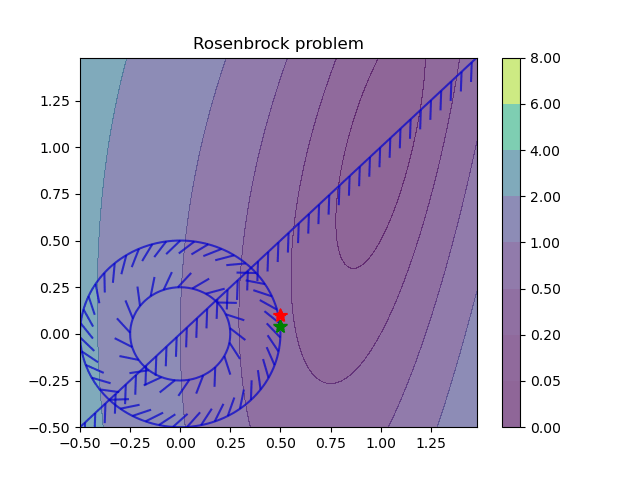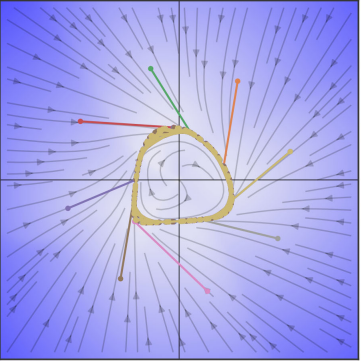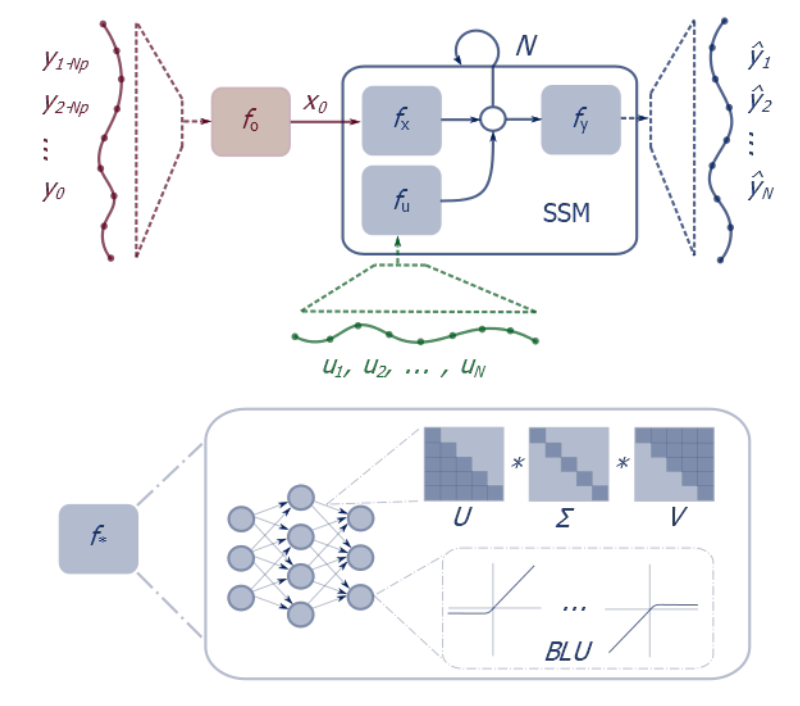Neuromancer SciML library
Developing novel scientific machine learning (SciML) methods and user-friendly software library in Pytorch.
Abstract
Recent research has demonstrated great advantages to integrating physical knowledge into machine learning methods, and conversely data-driven modeling into traditional physics-based scientific computing. However, the underlying compute infrastructure in the form of both hardware and software has diverged considerably from the need for integrated approaches to scientific discovery. The current misalignment of these sets of tools has led to some very inefficient scientific workflows involving running computations on different systems, transposition of data between formats and expensive data copies (in both time and space). As well, the lack of tight integration, directly results in slower computations and methodological limitations (e.g. impractical to solve end-to-end optimization problems across scientific computing and machine learning codes).
To adress these issues, this project developed novel principled scientific machine learning (SciML) methods and software tools. Specifically, under this project our team at PNNL has developed NeuroMANCER SciML library in Pytorch.
Open-source Software
Neural Modules with Adaptive Nonlinear Constraints and Efficient Regularizations (NeuroMANCER) is an open-source differentiable programming (DP) library for solving parametric constrained optimization problems, physics-informed system identification, and parametric model-based optimal control. NeuroMANCER is written in PyTorch and allows for systematic integration of machine learning with scientific computing for creating end-to-end differentiable models and algorithms embedded with prior knowledge and physics.
SciML Methods in Neuromancer
Learning to optimize (L2O) for constrained optimization
Learning Solutions to Constrained Optimization Problems is a set of methods that use machine learning to learn the
solutions (explicit solvers) to optimization problems. Constrained optimization problems where the solution x depends on the varying problem parameters ξ are called parametric programming problems. Neuromancer allows you to formulate and solve a broad class of parametric optimization problems via the Differentiable Programming (DP) paradigm. Hence, we call the approach Differentiable Programming Programming (DPP). Specifically, Neuromancer allows you to use automatic differentiation (AD) in PyTorch to compute the sensitivities of such constrained optimization problems w.r.t. their parameters. This allows you to leverage gradient-based optimizers (e.g., stochastic gradient descent) to obtain approximate solutions to constrained parametric programming problems via for semi-supervised offline learning. The main advantage of this offline DPP-based solution compared to classical optimization solvers (e.g., IPOPT) is faster online evaluation, often obtaining orders of magnitude speedups.
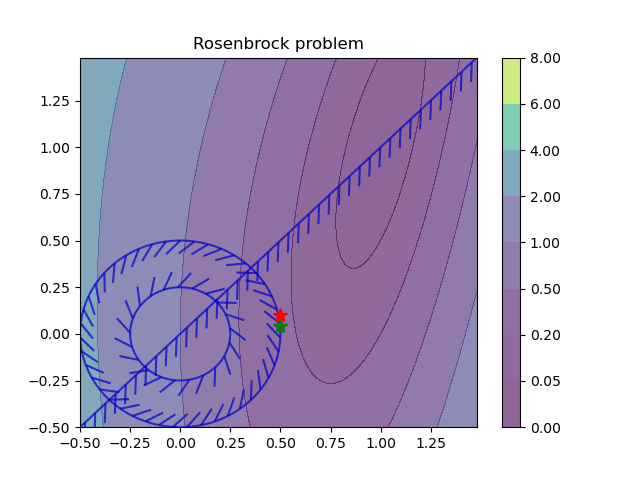
For more information see the open-source examples.
Learning SciML surrogates for dynamical systems
System identification is using statistical methods to construct mathematical models of dynamical systems given the measured observations of the system behavior. In the Neuromancer library, we are primarily interested in differentiable system ID methods that can incorporate prior physical knowledge into their architectures and loss functions. Examples include structural assumption on the computational graph inspired by domain application, structure of the weight matrices, or network architectures. Differentiaity allows us to leverage gradient-based optimization algorithms for learning the unknown parameters of these structured digital twin models from observational data of the real system.
Neuromancer currently supports the following system identification methods:
- Neural ordinary differential equations (NODEs)
- Neural state space models (NSSMs)
- Universal differential equations (UDEs)
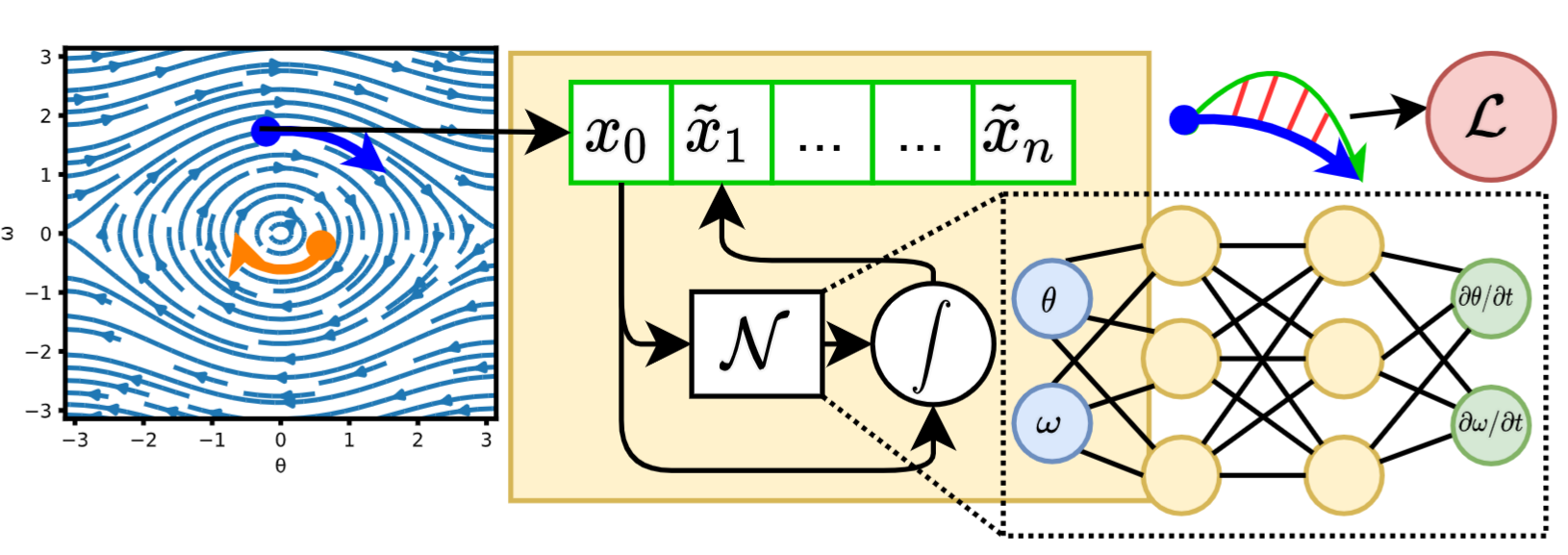
For more information see the open-source examples
Learning to control with differentiable programming
Differentiable predictive control (DPC) method represents a flagship capability of the Neuromancer library.
DPC allows us to learn control policy parameters directly by backpropagating model predictive control (MPC) objective function and constraints through the differentiable model of a dynamical system. Instances of a differentiable model include ordinary differential equations (ODEs), including neural ODEs, universal differential equations (UDEs), or neural state space models (SSMs).
The conceptual methodology shown in the figures below consists of two main steps. In the first step, we perform system identification by learning the unknown parameters of differentiable digital twins. In the second step, we close the loop by combining the digital twin models with control policy, parametrized by neural networks, obtaining a differentiable closed-loop dynamics model. This closed-loop model now allow us to use automatic differentiation (AD) to solve the parametric optimal control problem by computing the sensitivities of objective functions and constraints to changing problem parameters such as initial conditions, boundary conditions, and parametric control tasks such as time-varying reference tracking.
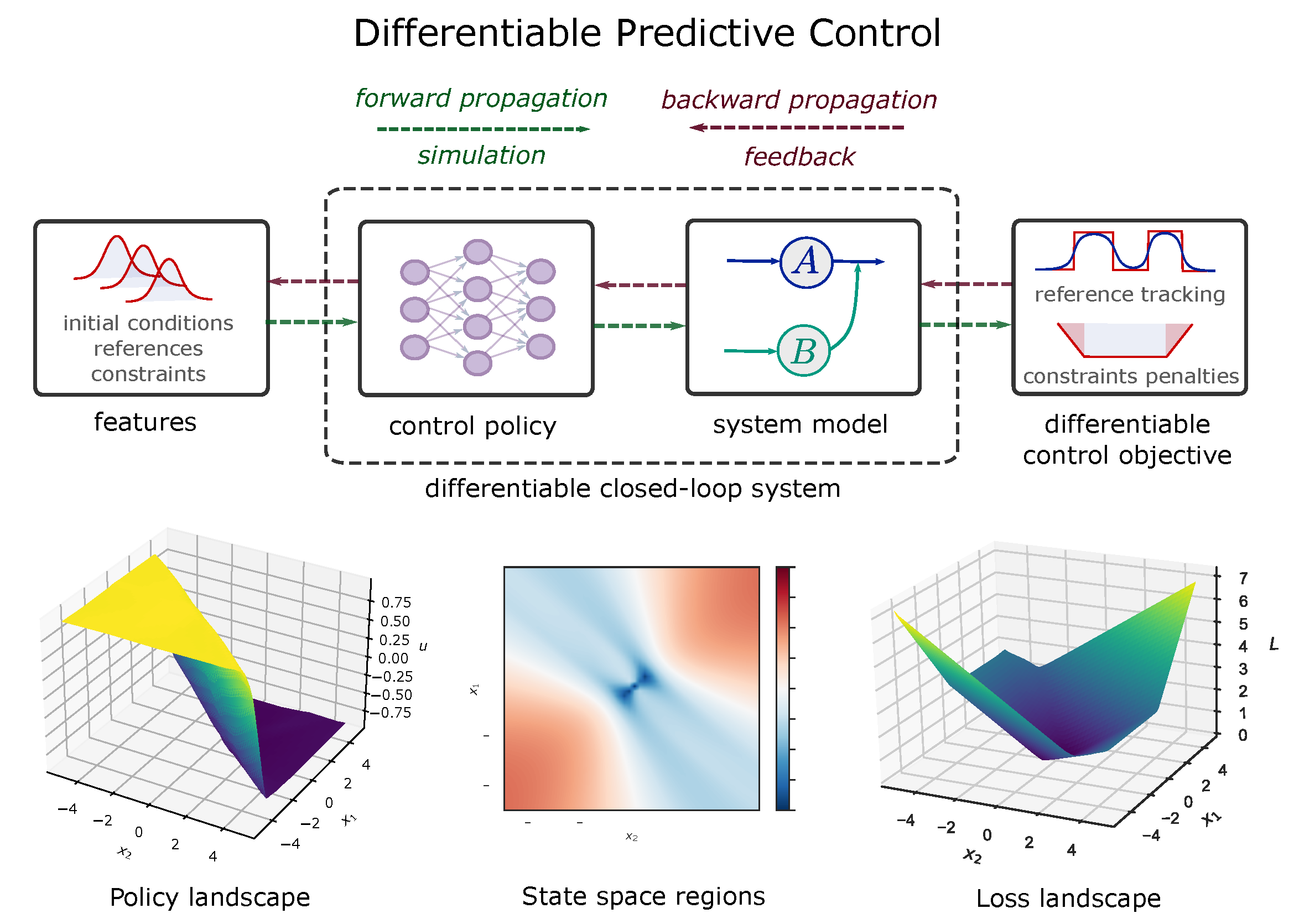
For more information see the open-source examples
Active Core Developers Team
- Ján Drgoňa (PI)
- Rahul Birmiwal
- Bruno Jacob
- Draguna Vrabie (Main Scientific Advisor)
Contributors and Collaborators
- Aaron Tuor (Co-PI)
- Madelyn Shapiro
- James Koch
- Cary Faulkner
- Ethan King
- Zhao Chen
- Shrirang Abhyankar
- Mia Skomski
- Christian Møldrup Legaard (Aarhus University - Summer internship)
- Bo Tang (UToronto - Summer internship)
- James Kotary (UVA - Summer internship)
- Cody Beck (NAU - Summer internship)
- Nandan Tumu (UPenn - Summer internship)
- Seth Britney (WWU - Summer internship)
Acknowledgements
This research was partially supported by the Mathematics for Artificial Reasoning in Science (MARS) and Data Model Convergence (DMC) initiatives via the Laboratory Directed Research and Development (LDRD) investments at Pacific Northwest National Laboratory (PNNL). PNNL is a multi-program national laboratory operated for the U.S. Department of Energy (DOE) by Battelle Memorial Institute under Contract No. DE-AC05-76RL0-1830.
